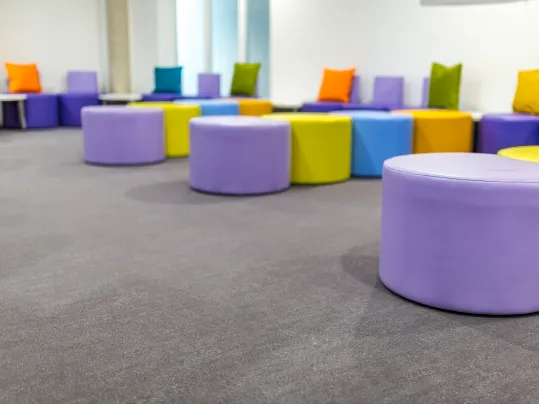Temporary Floor Protection
Technical Talk Series #6 with Garry Bateman, Head of Technical Sales and Support,
June 2021
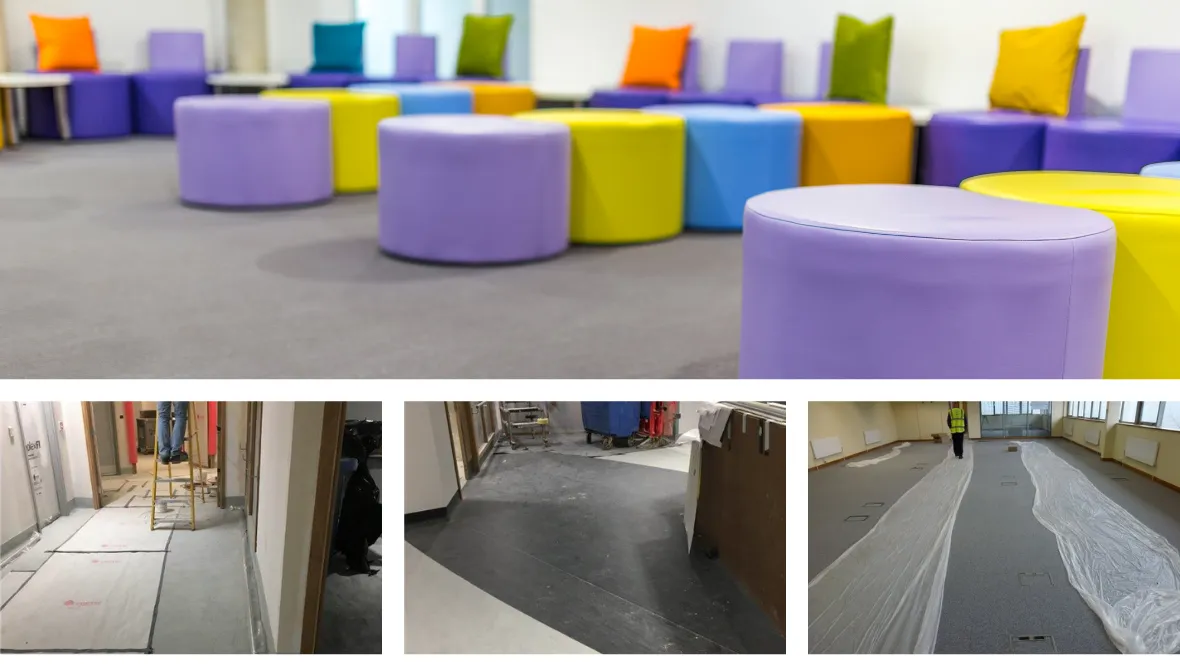
Temporary floor protection is sometimes a forgotten or ignored necessity. As this has become a more regular cause for post-installation problems and queries, it's important to take a closer look at this part of the flooring installation process.
In an ideal world, flooring should be the last major thing to be fitted on site. Whilst this would be best practice, the problems of building work programming can interfere with such good intentions.
.jpg)
From a manufacturer’s perspective, installing a decorative floor covering, whether resilient or textile, while building work is in progress in the same area, is in principle not acceptable. Effectively, providing protection for that is almost making the solution fit the problem. In all circumstances though, it is still wise to protect floors particularly whilst final snagging takes place, painting is touched up and furniture moved in.
Obviously, a completed installation should be cleared of scrap material and debris, any traces of adhesive residues removed from the floor and skirtings and then the flooring cleaned or vacuumed. At this point the flooring is ‘occupancy ready’ but critically also at its most vulnerable if the building is still under construction. It is very common for other trades to continue to work in or over areas of newly fitted flooring and so a suitable temporary floor protection product must be fitted on top.
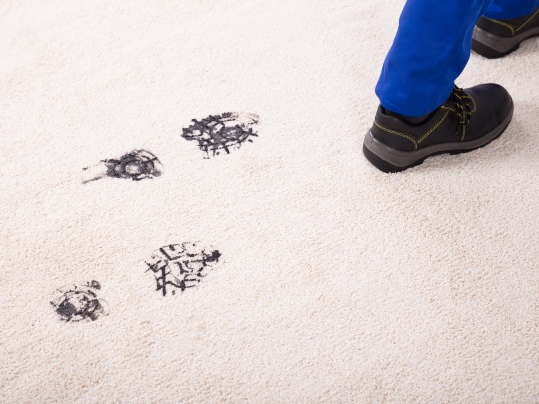
If the floor covering is to be protected from other trades or site traffic prior to project completion, the floor protection product chosen must be appropriate for the type and level of traffic likely to be experienced and the potential for impact, scratching or indentation damage to the flooring.
Save on post-installation remedial work or replacement
Floors are at their most vulnerable during any kind of building work. The right floor protection products will help to protect no matter how messy the job might be.
Save on cleaning-up time and cost
Cleaning up is part of any construction project, and the less cleaning to do, the faster the task is completed. With temporary floor protection, clean-up of construction sites is faster because protection materials help to prevent debris and dust from sticking to surfaces.
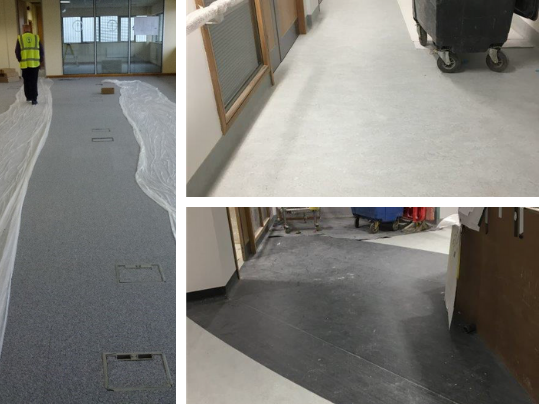
My experience suggests that protection is not seen as an ‘absolutely must have’ but rather ‘if considered necessary, based on budget constraints or lack of awareness of the damage that can be caused without it’. Many building sites have no or inadequate floor protection with the resultant calls to the supplier’s technical teams asking advice on how to ‘fix a problem’ - this is usually deep scratches on resilient flooring or heavy soiling on carpet tiles.
Examples of this include display cabinets being trafficked across a ‘soft type’ floor protection over a newly installed resilient flooring. The result was non-repairable deep scratches and patch replacement of the flooring – a very expensive mistake.
A carpet tile installation with a protective sheet ‘runner’ down the centre of walkways resulting in compacted soiling either side into the surface pile and a deep clean needed prior to handover.
There are many forms of temporary protection and a product fit-for-purpose should be selected after considering the following points:
• The surface requiring protection
• The site conditions and site traffic
• The length of time a surface requires protection prior to handover
• The level of protection required
As always, seek advice on selection of the appropriate material from suppliers.
For smooth resilient floors a product providing impact protection is needed. Products options include twin-wall/ polypropylene board and hardboard. Twin-wall/twin-fluted polypropylene board is supplied in sheet form with the twin-wall composition offering impact protection. Hardboard is also supplied in sheet form with added protection against scuffs, scratches as well as impact.
Note: It is advisable to check to see if hardboard protection needs to be flame retardant.
For heavier traffic sites or sites requiring protection for a longer term, always consider using a heavier grade protection. Hardboard or heavier duty fluted polypropylene board may be more suitable for those locations.
Both polypropylene board and hardboard can be recycled. There is some argument to suggest hardboard offers an environmentally friendly approach to protection but, as always, there are positive and negative aspects for all types of system. It is up to the manufacturer/ supplier to advise of the benefits of their system and any potential environmental impact.
For textile flooring, impact protection is not such an important issue as protection from dust. Adhesive backed “tacky back” polythene is a commonly used option. This product is simply rolled out and bonds directly to the carpet pile surface. The tacky back will hold the product in place during the programme of works. After use, the material simply peels off clean, leaving no residue. Alternatively, a loose-fitting sheet can be used, either a polypropylene or polyethylene sheeting. This can then be fixed in place using either tapes or a suitable dry-fix method.
When using protective sheeting on textile products, ensure that all edges are sealed to prevent building debris and dust getting underneath the sheet and settling onto the surface pile.
Note: Ensure that any protective film is suitable for use with the flooring and check any restrictions such as use with underfloor heating or length of time for safe adhesion. Some protective sheet products with a tacky film in contact with textile floor coverings can leave an adhesive residue when removed. This can be difficult to remove and attract dirt when the floor covering is put into use. The potential for this effect should be checked with the protection product manufacturer before use and advice on suitability confirmed.
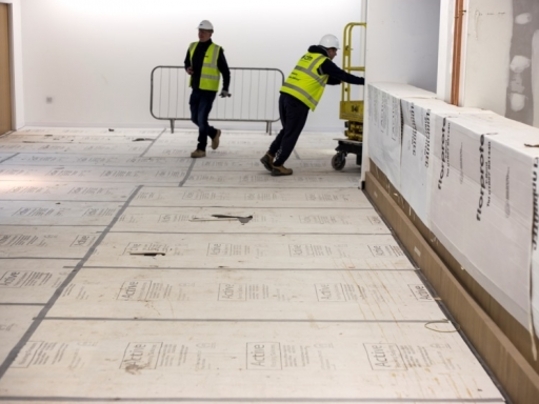
A product providing impact protection is needed
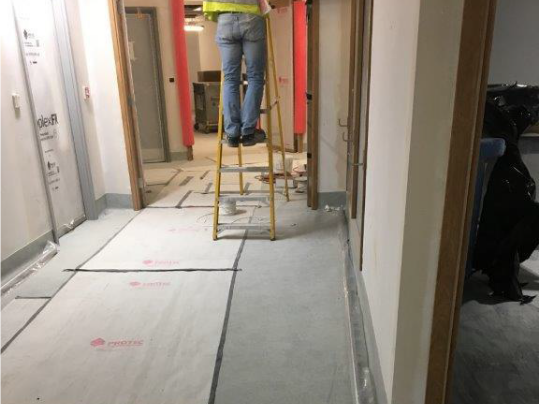
Polypropylene or polyethylene sheeting fixed with tapes
For any protective covering, always ensure any adhesive tape residues, particularly on textile pile surfaces, are removed before use to avoid ‘soiling lines’ appearing on the floor coverings surface after removal.
Floor protection products are available from various suppliers who can offer informed guidance as to the most appropriate type to select. They really can make a difference to ensure the perfect floor installed remains so before use or handover.
The CFJ/CFA Awards in July 2020 demonstrated how amazingly good floors can look when the correct subfloor preparation, product selection, skilled fitting and aftercare, including floor protection, are applied.
